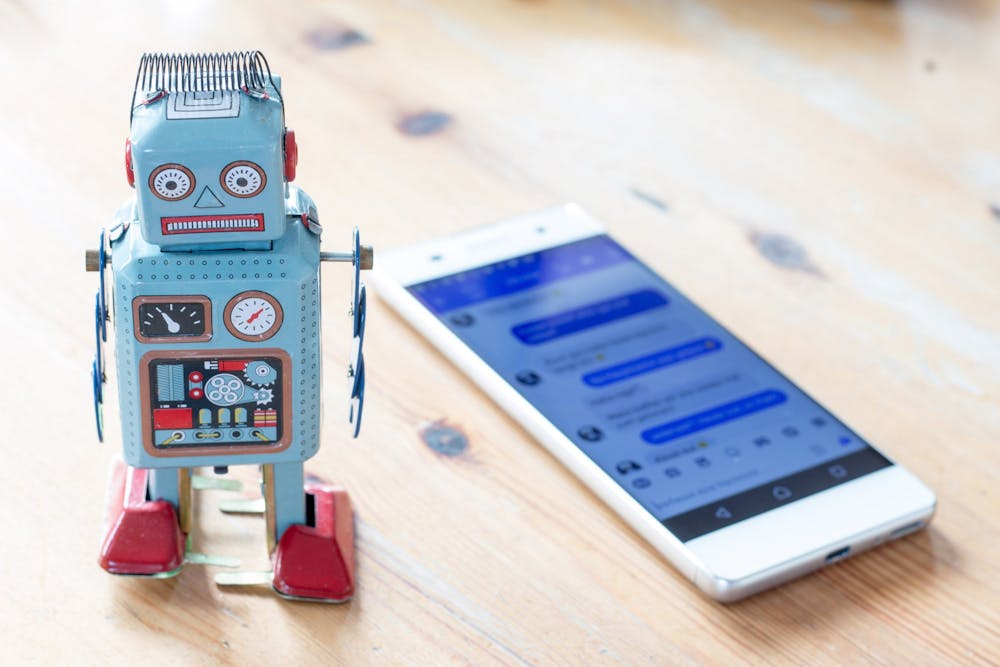Researchers at Indiana University received a one-year $200,000 grant last winter from the National Science Foundation to work on a new AI chatbot that will facilitate more inclusive STEM lesson plans for instructors. It is aimed at giving marginalized children greater opportunities to pursue STEM learning and subsequent jobs in STEM fields.
The project will be conducted in a two-pronged front. Jeremy Price, assistant professor of technology, innovation, and pedagogy in urban education at IUPUI, is leading the social aspect of gathering input data from teachers. Sunandan Chakraborty, assistant professor of data science at IUPUI, is heading the design and engineering aspect of the chatbot’s AI.
Price, the director of Collaborative for Equitable and Inclusive STEM Learning (CEISL), reached out to several people from different disciplines to work on the project. Christina Graff, associate professor in special education, and Ted Hall, assistant dean for student support and diversity, bring in an important perspective to the project, he said. They will focus on figuring out how to implement the project in teaching.
Other team members under Price include CEISL associate director Amy Waechter-Versaw, CEISL research scholars AJ Knoors and Evelyn Avalos, and IU doctoral student Akaash Arora. They are chiefly responsible for communicating with the teachers and setting up any meetings, focus groups or events for the team.
Price said that teachers often have a hard time trying to connect with students from a diverse set of backgrounds through their curriculum, especially when they come from marginalized communities. He said they came up with the idea of a chatbot that can talk to professors about how they can form their lesson plans to better adapt to students, while still ensuring community voices are incorporated.
He said he and his team have laid out the groundwork of the research and are currently assembling a panel of experts across the country with backgrounds in relevant areas such as AI, social justice, computer science and education.
Price said that the chatbot, dubbed Critical Activity Teacher Planning Companion, will primarily target teachers from kindergarten through 12th grade. He said the first prototype of the AI is scheduled to be deployed by March or April 2024, at which point the recruited teachers would be asked to interact with it and build lesson plans.
“This is the first real attempt at trying to use AI in a way that has a direct impact on students of color and poor students,” Price said. “It is a really exciting opportunity that does not happen very often.”
Akaash Arora said he will be responsible for the way the AI will interact with the teachers and is currently in the process of recruiting teachers for the purpose. He also said they are drafting prompts they think the teacher would ask the chatbot.
“This would be very helpful for teachers,” Arora said. “I used to work as a math teacher and I know it can be hard to create lesson plans, so that’s why I’m highly invested in this project.”
He said the project should not be thought of as a “ChatGPT for teachers” as that would be more generic, reiterating that CATPC would provide the culturally relevant answers for the end goal of formulating an all-inclusive lesson plan, which no other current AI is capable of.
The study modeled the relevant users on the Indianapolis Near Eastside Community, a local neighborhood going through a process of gentrification. Price said CEISL had already been collaborating with them for other projects, and that the chatbot would be centered around students and teachers in this community. To this effect, the teachers in this neighborhood will work in close collaboration with Price’s team in discussions and focus groups starting this month. This process will generate a major part of the training data for the AI.
Price said the team will also be implementing a design that will enhance useability, especially for teachers with disabilities.
Meanwhile, Chakraborty is working extensively on developing the AI with student researchers from the Luddy Applied Data Science graduate program. He said his team currently comprises two such students working on the coding facet, with potentially more should there be a need for it.
Chakraborty said his team is currently looking at how other AI models are generating responses based on dummy inputs, which are hypothetical questions teachers may ask, and how they can add context-sensitive training data from the community engagement into the process.
“It should be able to produce lesson plans which are uniformly accessible across cultures,” Chakraborty said. “We are not thinking of anything global as of now, but locally, everyone should be able to consume, accept and appreciate it.”
He discussed some difficulties they might face in the coming months. He mentioned that they need actual data from community engagement to gain experience because they don't have anything concrete to work with yet. He emphasized the importance of clearly defining what the AI can do and creating specific problem statements to accomplish these goals. He also mentioned that the most challenging part will be finding those solutions, especially when dealing with unexpected situations the chatbot might encounter.
He said culture is a multidimensional thing and they are taking it one step at a time, potentially narrowing it down in the future while ensuring scalability. Price also said that they are hoping to secure another three-year grant to build upon the prototype, following its hopeful success by April.



